2. PlantUML Stdlib Under The Hood¶
Tip
Below are the steps I took to understand the PlantUML Standard Library Macros.
It’s a step-by-step in the dark - taking small validated steps.
The steps are listed here because it’s educational and interesting.
You should not, and don’t have to, follow these steps.
Based on the understanding gained, there’s a better way to go.
2.1. Goal¶
Look under the hood of the generated plantuml icon files from https://github.com/awslabs/aws-icons-for-plantuml to understand them better - from first principles e.g. https://github.com/awslabs/aws-icons-for-plantuml/blob/master/dist/Compute/Batch.puml
To confirm understanding
a new bare-minimum macro will be created that requires only 1 parameter !define Batch(e_alias)
a new macro will be added to allow scaling the icon size
2.2. Steps to Understanding¶
2.2.1. Using the sprite directly¶
“Batch” is defined in https://github.com/awslabs/aws-icons-for-plantuml/blob/master/dist/Compute/Batch.puml) ala
sprite $Batch [64x64/16z] {...
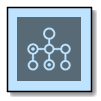
1 2 3 4 5 6 7 8 9 10 11 | @startuml
!include <awslib/AWSCommon>
!include <awslib/Compute/Batch.puml>
rectangle "<$Batch>"
'NOTE that if we add a more than one call - nothing happens! We're missing an "as x"
rectangle "<$Batch>"
@enduml
|
2.2.2. Add an “as whatever”¶
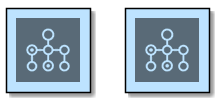
1 2 3 4 5 6 7 8 9 10 11 | @startuml
!include <awslib/AWSCommon>
!include <awslib/Compute/Batch.puml>
rectangle "<$Batch>"
'NOTE that if we add a more than one call - nothing happens! Need to change the second one to "as whateverElse"
rectangle "<$Batch>" as whatever
rectangle "<$Batch>" as whatever
@enduml
|
2.2.3. Bare Minimum¶
Extract the sprite from the Batch.puml
Note that plantuml needs the @startuml and @endumlto recognize the file as a plantuml diagram i.e. it won’t work without these
![@startuml
sprite $Batch [64x64/16z] {
xLQ7bjim30CdzFzVtEV1iErPkJpT7iYm5aWDKERujFZ5Bp8YkSvM011VfMzSDy2Mw1JidbCGAtmllmbPuIkoImjyGUsyBV4LV95_Xny50bpW4uTRAjOKu81b
Xa0vbX3OKFG5C0IMNLyxXA_3PvW5hqHSOFBP_Ovk4036hYi0pJdTCgqD6A0g4FQ0hOwygxSikGOanw11AuvtomxXjNiRDECmn21xxTkJP0N4tdy1Gmu5T2GW
6ygFL_sqbx3NvA_FVtt_ri_F1CZNra-10TpNhvVr2KGcyVCOdoBySlpv-jC1ZSVveO36_Fwb0UASqGqG0QpfJgP2Eo60u59-fLVozhhdNk2WTeDpq2O6AAL_
uV7KGPNO2lya17gz1pMiD1VmFNH9IBLNe3xA3q07eNsMy_WdXESwU4jRmddEk-FUuPFjjthiqAEGVUz8rlqmsK1nhtYlklvp7vWRfka0jUNITUdTzgxFyzLx
-Ikh_YdmYr_y0G
}
@enduml](../_images/plantuml-4708529c1973720e9b2994f2bbd88d7c3360a542.png)
1 2 3 4 5 6 7 8 9 10 11 | @startuml
sprite $Batch [64x64/16z] {
xLQ7bjim30CdzFzVtEV1iErPkJpT7iYm5aWDKERujFZ5Bp8YkSvM011VfMzSDy2Mw1JidbCGAtmllmbPuIkoImjyGUsyBV4LV95_Xny50bpW4uTRAjOKu81b
Xa0vbX3OKFG5C0IMNLyxXA_3PvW5hqHSOFBP_Ovk4036hYi0pJdTCgqD6A0g4FQ0hOwygxSikGOanw11AuvtomxXjNiRDECmn21xxTkJP0N4tdy1Gmu5T2GW
6ygFL_sqbx3NvA_FVtt_ri_F1CZNra-10TpNhvVr2KGcyVCOdoBySlpv-jC1ZSVveO36_Fwb0UASqGqG0QpfJgP2Eo60u59-fLVozhhdNk2WTeDpq2O6AAL_
uV7KGPNO2lya17gz1pMiD1VmFNH9IBLNe3xA3q07eNsMy_WdXESwU4jRmddEk-FUuPFjjthiqAEGVUz8rlqmsK1nhtYlklvp7vWRfka0jUNITUdTzgxFyzLx
-Ikh_YdmYr_y0G
}
@enduml
|
2.2.3.1. Bare Minimum by including Batch.puml¶
The result is the same.

1 2 3 4 5 6 | @startuml
!include <awslib/AWSCommon>
!include <awslib/Compute/Batch.puml>
@enduml
|
2.2.3.2. Illegal Bare Minimum by including all.puml¶
Note: This is not valid plantuml as it does not contain any elements.
The VSCode Plantuml extension will happily render this in preview mode. But VSCode Plantuml extension export will fail
Plantuml call will generate a blank output.
1 2 3 4 5 6 | @startuml
!include <awslib/AWSCommon>
!include <awslib/Compute/all.puml>
@enduml
|
2.2.3.3. Listsprites¶
Add the listsprites keyword
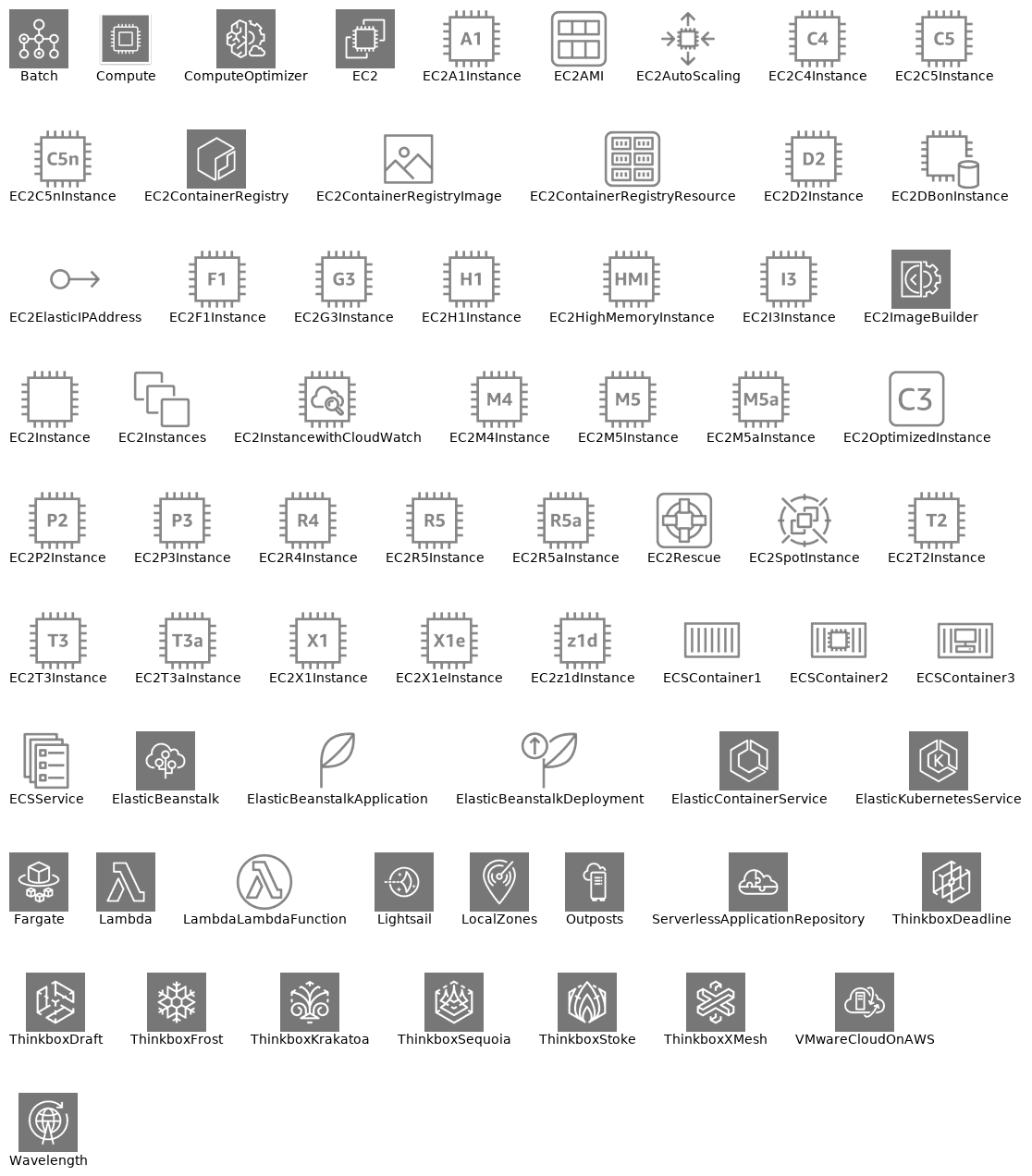
1 2 3 4 5 6 7 8 | @startuml
!include <awslib/AWSCommon>
!include <awslib/Compute/all.puml>
listsprites
@enduml
|
2.2.4. Where did that guy come from?¶
If any color is added we get an actor (from Deployment Diagram so can explicitly use a rectangle as the Deployment Diagram entity - see next example)
![@startuml
sprite $Batch [64x64/16z] {
xLQ7bjim30CdzFzVtEV1iErPkJpT7iYm5aWDKERujFZ5Bp8YkSvM011VfMzSDy2Mw1JidbCGAtmllmbPuIkoImjyGUsyBV4LV95_Xny50bpW4uTRAjOKu81b
Xa0vbX3OKFG5C0IMNLyxXA_3PvW5hqHSOFBP_Ovk4036hYi0pJdTCgqD6A0g4FQ0hOwygxSikGOanw11AuvtomxXjNiRDECmn21xxTkJP0N4tdy1Gmu5T2GW
6ygFL_sqbx3NvA_FVtt_ri_F1CZNra-10TpNhvVr2KGcyVCOdoBySlpv-jC1ZSVveO36_Fwb0UASqGqG0QpfJgP2Eo60u59-fLVozhhdNk2WTeDpq2O6AAL_
uV7KGPNO2lya17gz1pMiD1VmFNH9IBLNe3xA3q07eNsMy_WdXESwU4jRmddEk-FUuPFjjthiqAEGVUz8rlqmsK1nhtYlklvp7vWRfka0jUNITUdTzgxFyzLx
-Ikh_YdmYr_y0G
}
"<color:red><$Batch></color>"
@enduml](../_images/plantuml-376ddbcda8485ffe4974708d93160884b5ce3bea.png)
1 2 3 4 5 6 7 8 9 10 11 12 13 14 | @startuml
sprite $Batch [64x64/16z] {
xLQ7bjim30CdzFzVtEV1iErPkJpT7iYm5aWDKERujFZ5Bp8YkSvM011VfMzSDy2Mw1JidbCGAtmllmbPuIkoImjyGUsyBV4LV95_Xny50bpW4uTRAjOKu81b
Xa0vbX3OKFG5C0IMNLyxXA_3PvW5hqHSOFBP_Ovk4036hYi0pJdTCgqD6A0g4FQ0hOwygxSikGOanw11AuvtomxXjNiRDECmn21xxTkJP0N4tdy1Gmu5T2GW
6ygFL_sqbx3NvA_FVtt_ri_F1CZNra-10TpNhvVr2KGcyVCOdoBySlpv-jC1ZSVveO36_Fwb0UASqGqG0QpfJgP2Eo60u59-fLVozhhdNk2WTeDpq2O6AAL_
uV7KGPNO2lya17gz1pMiD1VmFNH9IBLNe3xA3q07eNsMy_WdXESwU4jRmddEk-FUuPFjjthiqAEGVUz8rlqmsK1nhtYlklvp7vWRfka0jUNITUdTzgxFyzLx
-Ikh_YdmYr_y0G
}
"<color:red><$Batch></color>"
@enduml
|
2.2.4.1. Lose the guy - add a Deployment Diagram Rectangle Instead¶
![@startuml
sprite $Batch [64x64/16z] {
xLQ7bjim30CdzFzVtEV1iErPkJpT7iYm5aWDKERujFZ5Bp8YkSvM011VfMzSDy2Mw1JidbCGAtmllmbPuIkoImjyGUsyBV4LV95_Xny50bpW4uTRAjOKu81b
Xa0vbX3OKFG5C0IMNLyxXA_3PvW5hqHSOFBP_Ovk4036hYi0pJdTCgqD6A0g4FQ0hOwygxSikGOanw11AuvtomxXjNiRDECmn21xxTkJP0N4tdy1Gmu5T2GW
6ygFL_sqbx3NvA_FVtt_ri_F1CZNra-10TpNhvVr2KGcyVCOdoBySlpv-jC1ZSVveO36_Fwb0UASqGqG0QpfJgP2Eo60u59-fLVozhhdNk2WTeDpq2O6AAL_
uV7KGPNO2lya17gz1pMiD1VmFNH9IBLNe3xA3q07eNsMy_WdXESwU4jRmddEk-FUuPFjjthiqAEGVUz8rlqmsK1nhtYlklvp7vWRfka0jUNITUdTzgxFyzLx
-Ikh_YdmYr_y0G
}
rectangle "<$Batch>"
@enduml](../_images/plantuml-b8be8ab25ceaca8ecd94a7d577e36b9ff6ed91ac.png)
1 2 3 4 5 6 7 8 9 10 11 12 13 | @startuml
sprite $Batch [64x64/16z] {
xLQ7bjim30CdzFzVtEV1iErPkJpT7iYm5aWDKERujFZ5Bp8YkSvM011VfMzSDy2Mw1JidbCGAtmllmbPuIkoImjyGUsyBV4LV95_Xny50bpW4uTRAjOKu81b
Xa0vbX3OKFG5C0IMNLyxXA_3PvW5hqHSOFBP_Ovk4036hYi0pJdTCgqD6A0g4FQ0hOwygxSikGOanw11AuvtomxXjNiRDECmn21xxTkJP0N4tdy1Gmu5T2GW
6ygFL_sqbx3NvA_FVtt_ri_F1CZNra-10TpNhvVr2KGcyVCOdoBySlpv-jC1ZSVveO36_Fwb0UASqGqG0QpfJgP2Eo60u59-fLVozhhdNk2WTeDpq2O6AAL_
uV7KGPNO2lya17gz1pMiD1VmFNH9IBLNe3xA3q07eNsMy_WdXESwU4jRmddEk-FUuPFjjthiqAEGVUz8rlqmsK1nhtYlklvp7vWRfka0jUNITUdTzgxFyzLx
-Ikh_YdmYr_y0G
}
rectangle "<$Batch>"
@enduml
|
2.2.5. Add some color¶
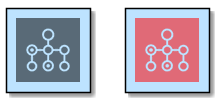
1 2 3 4 5 6 7 8 9 10 | @startuml
!include <awslib/AWSCommon>
!include <awslib/Compute/Batch.puml>
rectangle "<$Batch>"
'this overides/specifies a color as red
rectangle "<color:red><$Batch></color>"
@enduml
|
2.2.6. Understanding the AWSEntity Macro¶
Based on reconstructing the existing Macros, we can define our own minimal macro:
!define Batch(e_alias) AWSEntity(Batch, #D86613) as e_alias
where the parameters are
`Batch`this refers to the sprite $Batch`e_alias`this adds on a “as whatever” so multiple calls to same sprite return multiple rendered icons.`#D86613`is the color defined as part of the sprite puml file
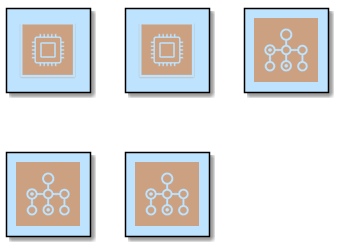
1 2 3 4 5 6 7 8 9 10 11 12 13 14 15 16 17 18 19 20 21 22 23 24 25 26 27 28 29 30 31 32 | @startuml
!include <awslib/AWSCommon>
!include <awslib/Compute/Batch.puml>
!include <awslib/Compute/Compute.puml>
'Use the Compute icon here for contrast
'this uses a macro - and hardcodes the color - color copyNpasted from Batch.puml file
'===================================================================================
!define Compute(e_alias) rectangle "<color:#D86613><$Compute></color>"
Compute(Compute)
Compute(Compute) as something
' This uses the AWSEntity macros defined in Batch.puml
' the end result is same as above - but we use the e_alias so that multiple calls show
'===================================================================================
!definelong AWSEntity(e_sprite, e_color)
rectangle "<color:e_color><$e_sprite></color>"
!enddefinelong
' Batch.puml
!define Batch(e_alias) AWSEntity(Batch, #D86613) as e_alias
Batch(whatever)
Batch(whateverElse)
Batch(3.13xyz)
@enduml
|
2.2.6.1. Add Scaling to AWSEntity Macro¶
Replacing the last lines from the previous example to add scale.

1 2 3 4 5 6 7 8 9 10 11 12 13 14 15 16 17 18 19 20 21 22 23 24 25 26 27 28 29 30 | @startuml
!include <awslib/AWSCommon>
!include <awslib/Compute/Batch.puml>
!include <awslib/Compute/Compute.puml>
'Use the Compute icon here for contrast
'this uses a macro - and hardcodes the color - color copyNpasted from Batch.puml file
'===================================================================================
!define Compute(e_alias) rectangle "<color:#D86613><$Compute></color>"
Compute(Compute)
Compute(Compute) as something
' This uses the AWSEntity macros defined in Batch.puml
' the end result is same as above - but we use the e_alias so that multiple calls show
'===================================================================================
!definelong AWSEntity(e_sprite, e_color)
rectangle "<color:e_color><$e_sprite></color>"
!enddefinelong
' Batch.puml
!define Batch(e_alias, scale) AWSEntity(Batch*scale, #D86613) as e_alias
Batch(whatever,2)
Batch(whateverElse,5)
Batch(3.13xyz, 0.3)
@enduml
|
Note
This scale parameter could be added to existing macros in puml files e.g. https://github.com/awslabs/aws-icons-for-plantuml/blob/master/dist/Compute/Batch.puml
But, for each macro (4 in this case), we would need to add a new macro that supports a scale parameter (giving 8 macros in total).
This is not very extensible or future proof!
So we need to come up with a better way…
!define Batch(e_alias, e_label, e_techn) AWSEntity(e_alias, e_label, e_techn, #D86613, Batch, Batch)
!define Batch(e_alias, e_label, e_techn, e_descr) AWSEntity(e_alias, e_label, e_techn, e_descr, #D86613, Batch, Batch)
!define BatchParticipant(p_alias, p_label, p_techn) AWSParticipant(p_alias, p_label, p_techn, #D86613, Batch, Batch)
!define BatchParticipant(p_alias, p_label, p_techn, p_descr) AWSParticipant(p_alias, p_label, p_techn, p_descr, #D86613, Batch, Batch)
2.2.7. Updating the puml files to support minimal macro¶
Using AWSSimplified.puml as a reference, we can create an AWSBare.puml file.
' Styling
' ##################################
hide stereotype
!definelong AWSEntityColoring(e_stereo)
skinparam rectangle<<e_stereo>> {
BackgroundColor AWS_BG_COLOR
BorderColor transparent
Shadowing false
}
!enddefinelong
' Overwriting Elements
' ##################################
!definelong AWSEntity(e_sprite, e_color)
rectangle "<color:e_color><$e_sprite></color>"
!enddefinelong
For each icon puml file e.g. Batch.puml
!define Batch(e_sprite) AWSEntity(e_sprite, #D86613)